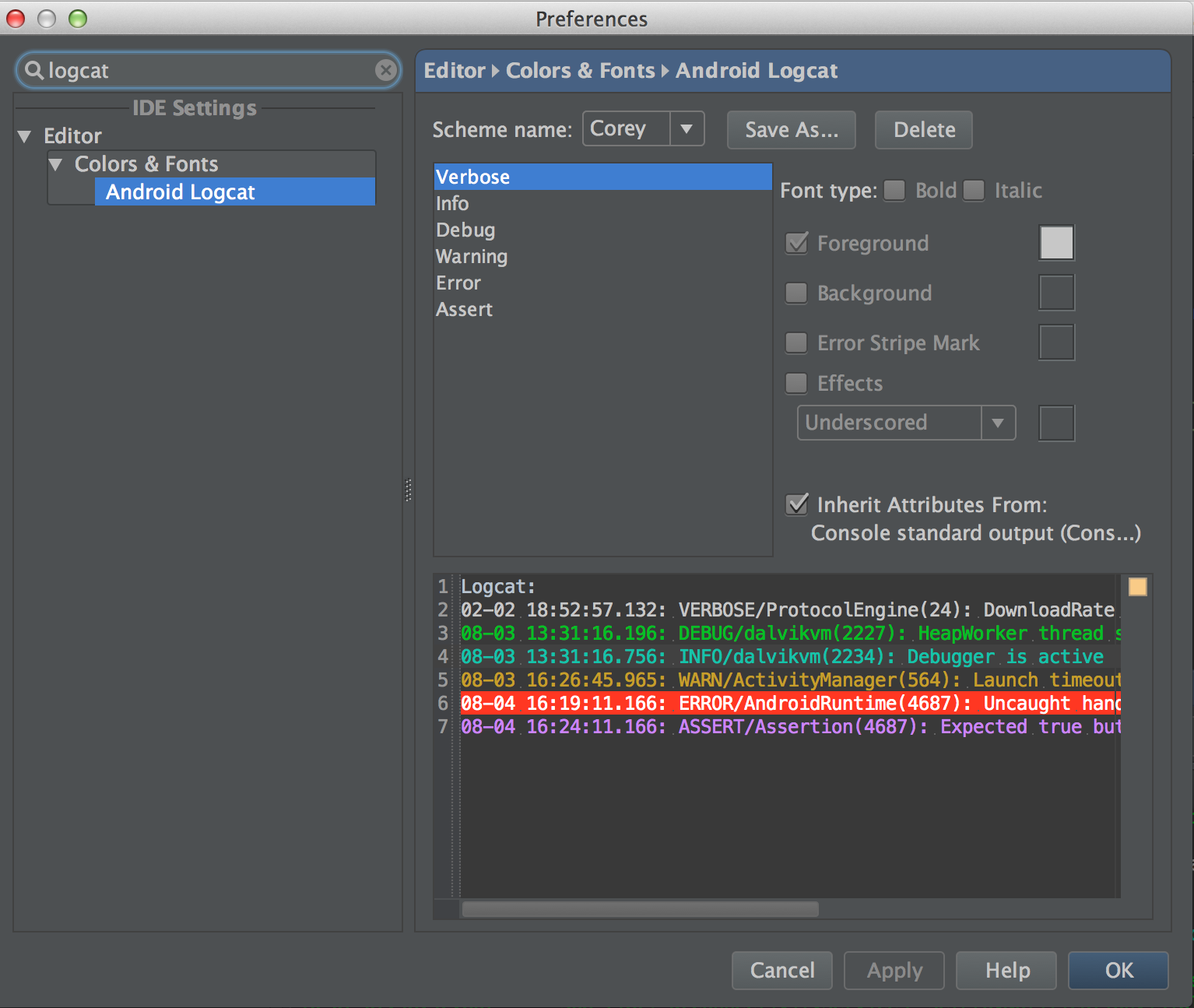

- Android studio logcat output how to#
- Android studio logcat output android#
- Android studio logcat output software#
- Android studio logcat output code#
- Android studio logcat output professional#
This command will extract the Android logcat. logcat -d -b main -b system -b events -v time > filename.txt. The option d will take care that the output will stop when all output is flushed.
Android studio logcat output code#
Here is the main code to open Logcat with print() statement. This command will extract the logcat information from the connected device and redirects the output to a file on the PC. When you want expert guidance, then sure you can hire Flutter Agency without any hesitation. Have a look below to find how you can fix this issue. This may happen regularly and there are different reasons for this issue.

Logcat will show nothing and it is completely blank. During that time, you may have a chance of getting nothing. How do I collect Logcat logs Connect your Android device to your computer over the USB cable.

The following logcat command lets you view only the log output and save it to a log file. In order to open Logcat, you have to Click View > Tool Windows > Logcat (from the toolbar window or Alt + 6). You can now see all the output from the network logging in logcat. You can also add such messages in the log class that is available in the application. The Logcat Window in the Android Studio can be effectively useful in displaying real time system messages. Logcat is one of the most essential tools in the Android Studio.

Such system messages can be thrown by the emulator very effectively. Therefore it is one of the most effective components at the time of app development since this Logcat can able to dump more system messages. Then Logcat Window can be more helpful for you to debug such output via collecting and then viewing those entire messages that the emulator throws.
Solution 5: Select the ‘Show only selected application option’. While running an application, there are more chances for programs to crash when something is not right. In general, the Logcat window is where you can print the message while running the application. but for all logcat output not for special. Android studio logcat output how to#
How to catch LogCat output in Android app TAG -> Tag of your application’s log.
Android studio logcat output professional#
If you still need to force portrait for some reason, sensorPortrait may be better than portrait for Android 2.3 (Gingerbread) and later this allows for upside-down portrait, which is quite common in tablet usage.Are you facing Android Studio not showing Logcat issues? Want to fix it immediately with the help of professional experts? Then you hire professionally skilled experts from Flutter Agency and find a better solution for this issue. The Logcat window in Android Studio displays system messages, such as when a garbage collection occurs, and messages that you added to your app with the Log class. A Node.js interface for working with Androids logcat output. This forces landscape on most tablets and portrait on most phones, but I still wouldn't recommend this for most "normal" apps (some users just like to type in the landscape softkeyboard on their phones, and many tablet users read in portrait - and you should let them). Display pretty Android and iOS logs without Android Studio or Console.app, with intuitive. Android studio logcat output software#
If your main concern is accidental orientation changes mid-activity that you think the device's sensors and software won't cope with well (for example, in a tilt-based game) consider supporting landscape and portrait, but using nosensor for the orientation. A few cases you may still want to think about, though, if you're not happy with the default behavior of sensor orientation in your use case: So most apps should just let the phone sensors, software, and physical configuration make their own decision about how the user wants to interact with your app. I'm talking about things like "this is a cash register app for one specific model of tablet always used in a fixed hardware dock." If your app doesn't have a strong UX argument that would lead to a negative experience for supporting other orientations, you should probably not force landscape. When users are on devices with hardware keyboards or game pads a la the Nvidia Shield, on Chromebooks, on foldables, or on Samsung DeX, forcing portrait can make your app experience either limiting or a giant usability hassle. Keep in mind that unlike the fairly uniform iPhone experience, there are some devices where portrait is not the clearly popular orientation. There are no shortcuts learn to use bundles and retainInstance fragments. Things besides app rotation that can trigger an activityĭestruction/recreation, including unavoidable things like multitasking. Lifecycle events or properly saving/restoring state. This does not absolve you of having to think about activity. Since this has become a super-popular answer, I feel very guilty as forcing portrait is rarely the right solution to the problems it's frequently applied to. Add android:screenOrientation="portrait" to the activity in the AndroidManifest.xml.








 0 kommentar(er)
0 kommentar(er)
